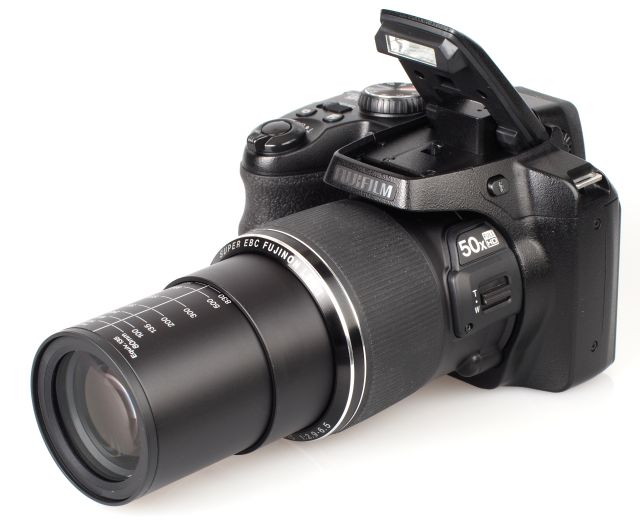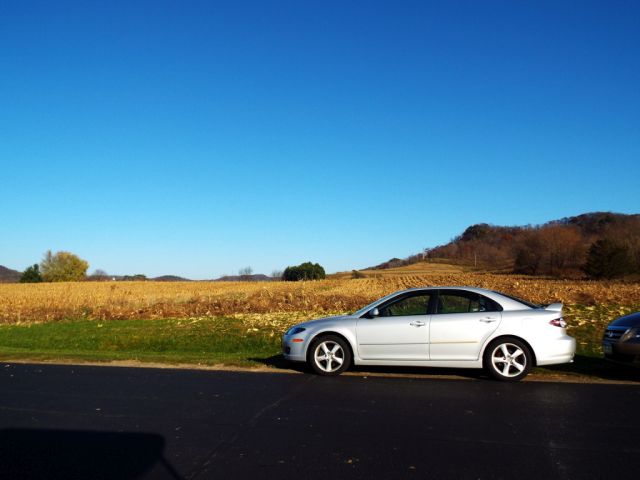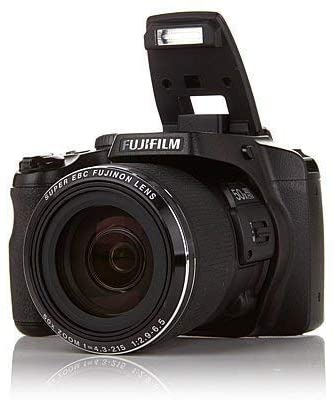A $1,000 Bridge Camera?
Those with long memories may recall the old Dr. Pepper slogan: "Dr. Pepper, So Misunderstood!"
It's the same with "bridge" cameras, essentially a mirrorless camera with nonremovable lens. The idea, dating back to film cameras, was that not everybody needs to change lenses. Many had lens ranging (in 35mm terms) from 24mm out to more than 500mm. That $1,000 one in the headline went much further....3,000 mm!!
Currently virtually all good digital bridge cameras (DBCs?) have the familiar rear screen and the desirable eye-level electronic viewfinder. Very low priced bridge cameras lacking the electronic viewfinder should be avoided. If you've had trouble using your little back-screen only camera outside, it won't get better with a bridge camera lacking the electronic eyepiece finder. Can I make this any more clear? Also, most bridge camera in a normal rage will not have as good an electronic finder as interchangeable lens mirrorless model.
Bridge cameras got a bad rap in the film days for many reasons and it carries over even today.
Part was because buyers wanted "the same kind of camera the pros use." Pros had removable lens cameras, so they bought one too, even if they never bought another lens.
It helped that camera stores made more money and sold more accessories for "pro" cameras. Also the camera store staff were often enthusiasts who did not consider bridge cameras worthy of high quality work. I know this, as I was once one of them. It's a snobby thing!
Again, from a business point of view, selling a full SLR camera often opened the door to future sales of lenses, filters, flash...and a nice big bag to carry it all.
Bridge cameras have all needed bits "baked in." Not much else to buy!
So 35mm bridge cameras did not flourish. All this after several companies spent a great deal of money designing superior lenses for these cameras that were so misunderstood.
Fast forward to today and we find the same situation. But don't ignore them!
First, digital bridge cameras take advantage of the same improvements in resolution, fast startup, faster focus, fast "burst" modes and more found in their full DSLR or mirrorless big brothers.
Again, using that eyepiece "electronic viewfinder" not only tends to isolate you from other distractions, it is especially useful outside in bright light.
Second, better lens design, coupled with in-camera image correction, lets makers fit bridge cameras with lenses only dreamed of in the 35mm era. I have seen one that covers 24mm to 3,000mm! Built in image stabilization and image correction make this possible.
Finally, these cameras also have a fairly high ISO, needed for those long telephoto shots to keep things steady. Most have genuine optical image stabilization and all the modes you can possibly imagine for scenic, sports, pets and portraits. Or leave them on full auto and snap away.
And, while I am not a big fan of video, these cameras often have stereo audio recording for high-quality videos and also Wi-Fi to transfer files to a phone or tablet. Some can even be operated remotely via smartphone or tablet, including a live view. This is done directly, no router needed!
The 16 MP Fuji FinePix S9950W I own ("refurbished") was only $150. I still like it after more than 10 years. Compare that to my ancient "early adopter" Minolta bridge camera from 20 + years ago with a much smaller zoom, 5 MP resolution and far fewer features that cost $1,200!
There are a lot of used Fujis and others flooding the used market. Stick with one at least 10 MP and make sure it used an SD card, preferably "HC" for higher capacity card use. Most will not have full manual controls, but will have "bursts" of shots that would have thrilled users of film cameras with motor drives.
My now "old" 16 MP Pentax X-5 has extreme ease of use, plenty of options, and a tilt-out rear screen. Used ones are on eBay for as little as $60.00. It is my "go-to" grab camera when one of the cats is doing something silly. My equally old 16 MP Fuji can be controlled via smart phone app, great for group shots when you want to be included. By the way, both cameras use AA batteries, so you a never stuck if they need a new set. They also last quite some time.
For those looking for something more upscale, check out Sony's recent line of bridge cameras, priced from about $500 with absolutely superb lenses. In-camera processing corrects for lens distortion or light falloff found in extremely long zoom ranges. I like Sony products and am sure their electronic eyepiece is better what I have.
And again, these cameras no longer use a mirror box optical system which reduces camera vibration dramatically. They are very much "mirrorless" cameras with permanent lenses.
So for a person trying to do a bit more with photography but not quite ready to invest in a interchangeable lens camera, these may be perfectly satisfactory for almost any kind of shooting you can imagine.
Do some serious thinking about the kind of pictures you wish to take and then the kind of hardware that is absolutely required to take those shots.
They still may not be the magic answer to getting those elusive sports action shots of the kids. But enough has improved that we may look back at the day when we carried around two or three zoom lenses with the same kind of nostalgia we do now when hearing about the "old school" folks who had the camera bag with six fixed focal length film camera lenses.





The camera offers "standard" color, "chrome" color and black & white.
There is also a mode for expanded dynamic range, which stacks several exposures.







